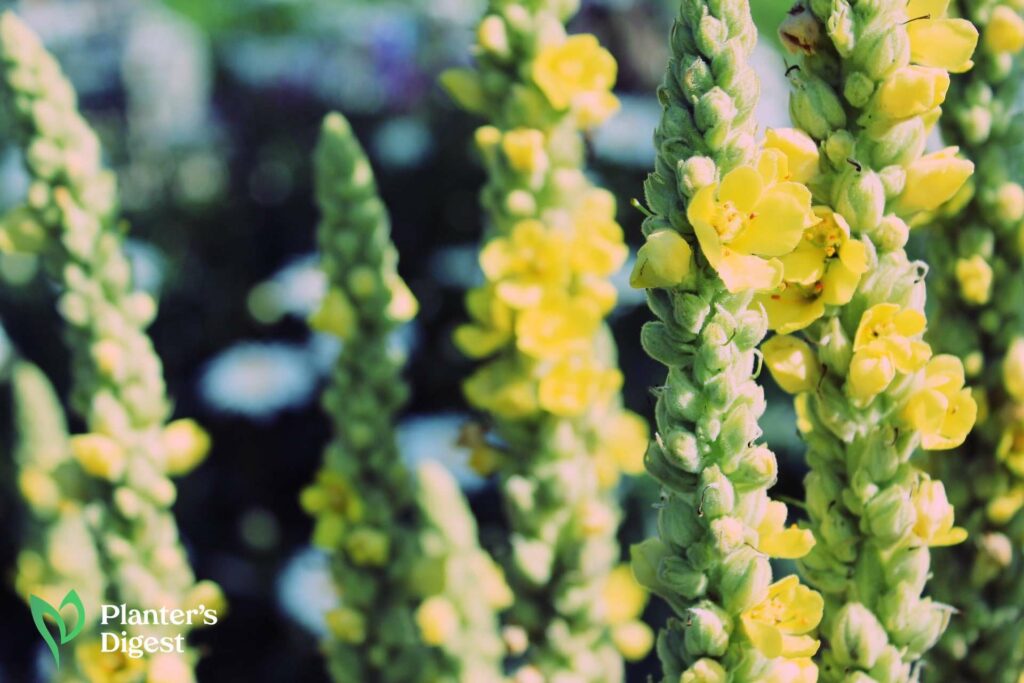
It’s great to have mullein in your backyard because you can easily access a natural herbal alternative to treat your cold or sore throat.
The only catch to this is that mullein isn’t the only plant with hairy leaves and tall spikes of yellow flowers.
Learn how to properly and correctly identify mullein in this article as we also introduce you to its notorious look-alikes!
What is mullein?
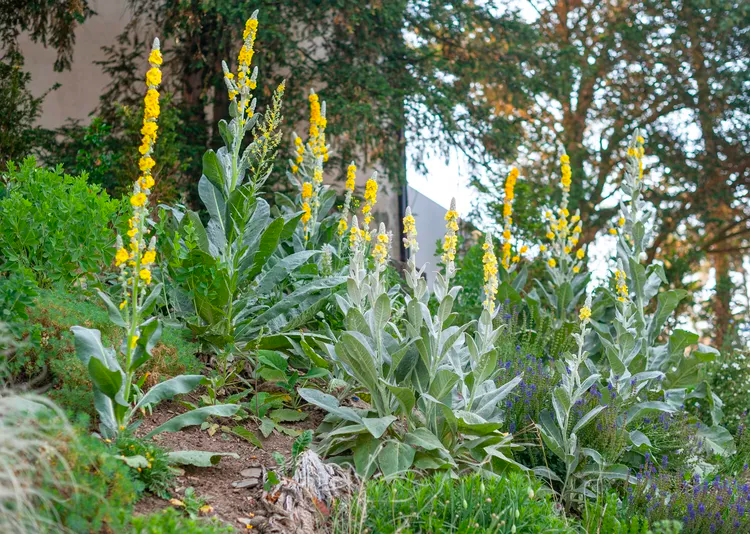
Mullein is a biennial herbaceous plant known for its flower stalks that reach up to 6 to 10 feet tall. It is native to Asia, Europe, and North Africa.
| Scientific Name | Verbascum thapsus |
| Common Name | Beggar’s BlanketMulleinOld Man’s FlannelGreat MulleinAaron’s RodAdam’s FlannelOur Lady’s CandleCommon MulleinWoolly Mullein |
| Family | Scrophulariaceae |
| Height | 6 to 10 feet tall |
| Leaves | VelvetyWhorledOvateReaches up to 2 feet wide |
| Flowers | YellowSpike InflorescenceSaucer-shaped4 to 5 petals |
| Blooming season | Summer |
| Stem | GrayPowderyBranched |
| Fruit | Brown capsule fruitContains 100,000+ seeds |
| Habitat | Open groundDisturbed soilFieldsRoadsidesPasturesWaste areasMeadows |
For its first year, mullein grows a velvety basal rosette of leaves that grow 12 to 15 inches wide. It then develops a tall spike of yellow flowers at the top of its stem.
The flowers of a mullein plant turn into a brown capsule fruit with over 100,000 seeds. It dies after flowering but self-seeds to propagate itself.
This plant thrives on well-drained dry, sandy, or rocky soil with a slightly acid to neutral pH. Although mullein prefers full sun, it can also tolerate partial shade.
How to Identify Mullein
The best way to identify mullein is to look for tall spikes of yellow flowers on top of a rosette of hairy green-gray leaves.
Mullein grows a basal rosette of leaves at the bottom, which have a velvety texture and ovate shape and reaches up to 2 feet wide.

In the middle of the mullein plant grows a tall spike inflorescence that reaches 6 to 10 feet tall. Tiny, yellow, tubular, 5-petaled flowers then bloom along the tall spike.
What are the uses and benefits of mullein?
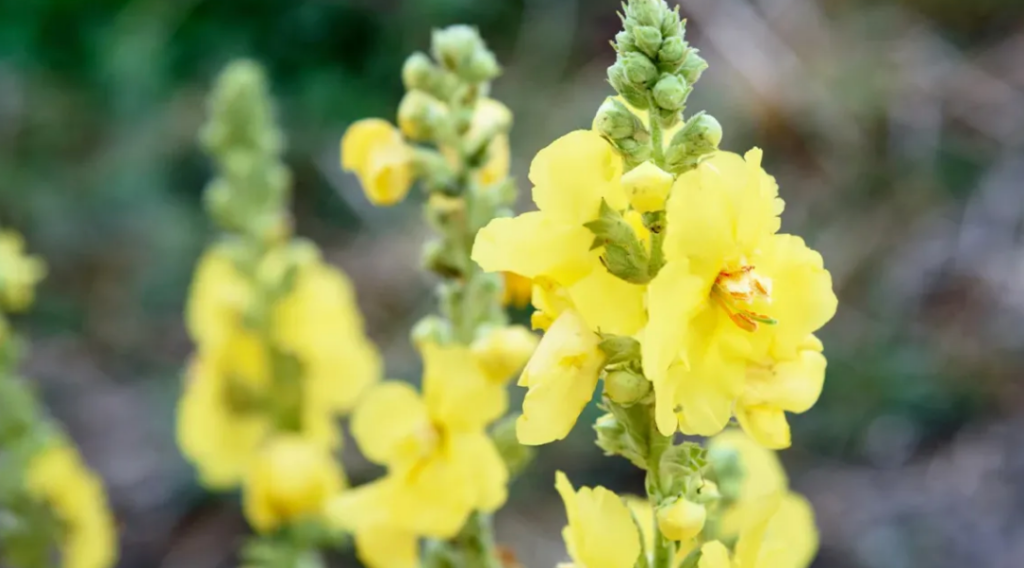
Mullein is generally a soothing herb for respiratory problems. Its flowers are used as an infusion to treat sore throats, coughs, and ear infections.
Its leaves, on the other hand, are smoked to treat tuberculosis and asthma.
Like ancient Roman soldiers, some dip the dried flower stalks in tallow or beef fat and use them as torches. They also use mullein leaves as padding to keep their feet warm.
3 Mullein Look-Alikes
Mullein is quite distinct in itself, but with all its look-alikes, wrong identification might lead to fatal consequences. So, here are three Mullein look-alikes that you should look out for.
1. Common Comfrey (Symphytum officinale)
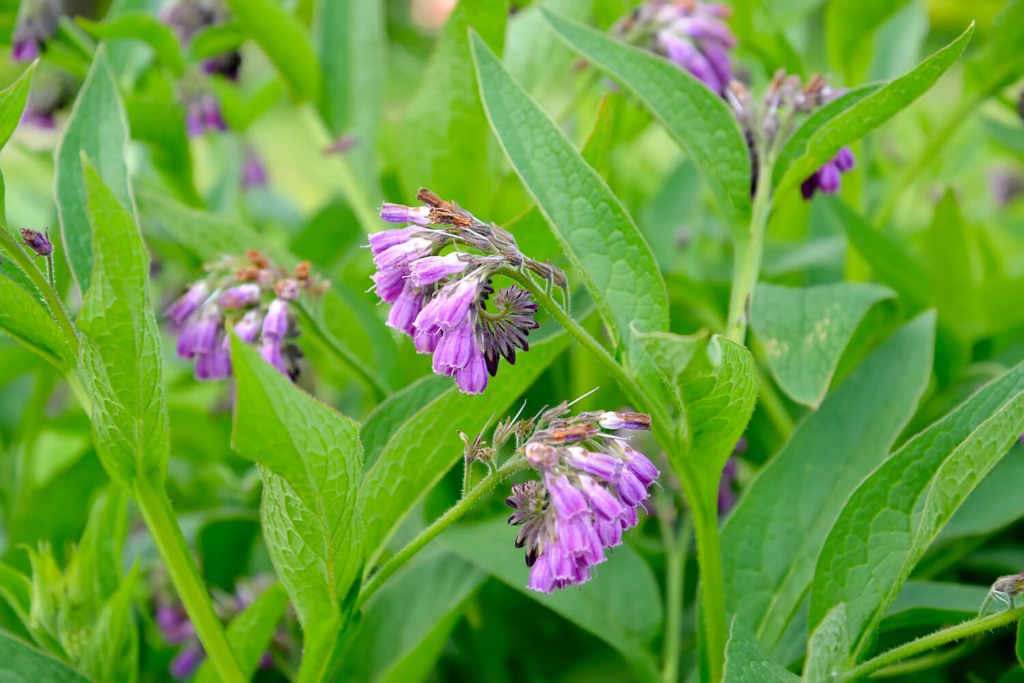
| Scientific Name | Symphytum officinale |
| Common Name | Black wortBonesetBruise wortComfreyCommon ComfreyConsoundCultivated ComfreyKnitboneQuaker ComfreySlippery-RootTrue Comfrey |
| Family | Boraginaceae |
| Height | 1 to 3 feet |
| Leaves | RoughFragrantRosulateOvateHairyMore than 6 inches |
| Flowers | PurpleCyme InflorescenceTubular ShapeDrooping Clusters |
| Blooming season | Spring to Summer |
| Similarity to Mullein | Hairy leaves |
| Difference from Mullein | Upright-growing leavesPurple flowers |
Common Comfrey is a woolly perennial plant indigenous to Europe. It is commonly found in ditches, riverbanks, or wet grasslands.
This plant initially develops a basal rosette of leaves and later grows stems up to 35 inches tall. It has green oval leaves covered with hairs that decrease in size towards the top of the plant.
The Common Comfrey’s leaves benefit the soil because they contain nitrogen, potassium, and phosphorus.
During the blooming season, this plant develops drooping clusters of purple tubular flowers.
Unfortunately, Common Comfrey contains pyrrolizidine alkaloids that are poisonous to humans. It causes liver and lung damage or even cancer when ingested.
This plant differs from Mullein through its upright leaves and purple flowers. Mullein, in contrast, has groundcover leaves and yellow flowers.
2. Lamb’s Ear (Stachys byzantina)
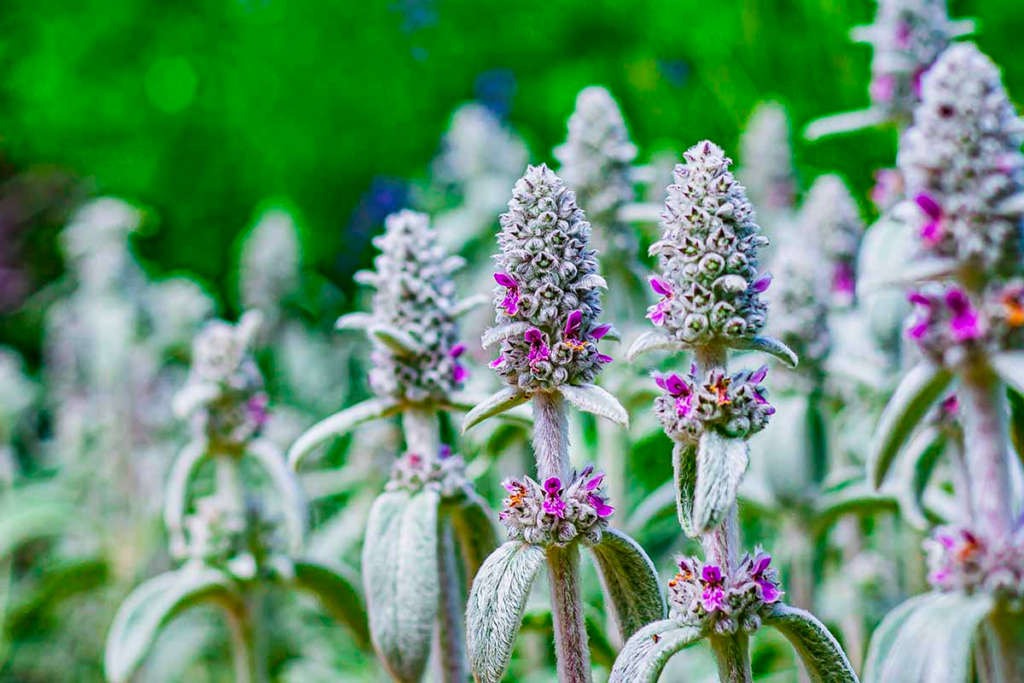
| Scientific Name | Stachys byzantina |
| Common Name | Donkey’s EarsJesus FlannelLamb’s EarLamb’s-earsLamb’s woolWooly BetonyWoolly hedge nettle |
| Family | Lamiaceae |
| Height | 1 foot |
| Leaves | Silver, Blue-GreenSoft VelvetyHairyRosulateElliptical3 to 6 inches long and wide |
| Flowers | PinkSpike InflorescenceLipped-shape2 to 3 petals |
| Blooming season | Summer |
| Similarity to Mullein | Velvety and hairy leavesFlower spike |
| Difference from Mullein | Blue-green leavesPurple flowers |
Lamb’s Ear is a herbaceous perennial plant that comes from the mint family. It is native to the hills of Iran, Armenia, and Turkey.
It is recognizable for its thick, velvety silver leaves that spread and serve as a ground cover. Every summer, it blossoms small pink flowers on spike-like stems.
This plant prefers well-drained soils and full sun or partial shade. It propagates using its stems by rooting at the nodes.
The leaves of Lamb’s Ear have an elliptical shape and are covered with white fur-like hairs. Similar to Mullein, its foliage also emits a fragrant scent when crushed.
However, Lamb’s Ear has distinctly blue-green foliage, while Mullein has sage-green leaves. Lamb’s Ear also has purple flowers, while Mullein has yellow blooms.
3. Foxglove (Digitalis purpurea)

| Scientific Name | Digitalis purpurea |
| Common Name | Common FoxgloveFoxglove |
| Family | Plantaginaceae |
| Height | 2 to 5 feet |
| Leaves | VelvetyRosulateOvateHairyMore than 6 inches long |
| Flowers | PurpleTerminal racemePendulousFunnel-shaped |
| Blooming season | Spring to Summer |
| Similarity to Mullein | Velvety and hairy leaves |
| Difference from Mullein | Blooms all year roundPurple flowers |
Foxglove is an erect biennial herb native to Europe. It is usually found in mountainsides, disturbed areas, and woodland clearings.
During its first year, it develops a rosette of leaves. The leaves grow dark green with serrated margins covered with white hairs.
In its second year, a flowering stem reaching 50 inches tall emerges. Foxglove then produces purple funnel-shaped flowers with white and dark purple spots on the inside.
These flowers grow in an elongated cluster, with one side carrying the raceme of large purple pendulous flowers.
Foxglove prefers moist, well-drained soil that is rich in organic matter. It grows best in partial afternoon shade.
Unfortunately, its flowers, leaves, roots, and stems are highly poisonous because of cardiac glycosides. Foxglove is known to cause nausea, vomiting, diarrhea, stomach pain, irregular pulse, cardiac arrhythmias, and even death.
Compared with Mullein, which blooms yellow flowers randomly, Foxglove blooms all year round with purple flowers.
FAQs on Mullein
Mullein herb produces oil that helps the body expel mucus. Because of this, mullein is used to treat cough, tuberculosis, pneumonia, chills, allergies, sore throat, asthma, and other respiratory problems.
Mullein tea is an excellent natural remedy for respiratory diseases. As an expectorant herb, mullein helps loosen bronchial secretions making it easier to expel mucus from the lungs.
Only the roots and seeds of mullein plants are poisonous since they contain rotenone and hemolytic saponins, respectively. These toxic chemical components are used in insecticides and are known as fish poisons.
Mullein tea is a natural sedative that contains chemicals that help induce sleep and relieve people’s sleeping problems.




